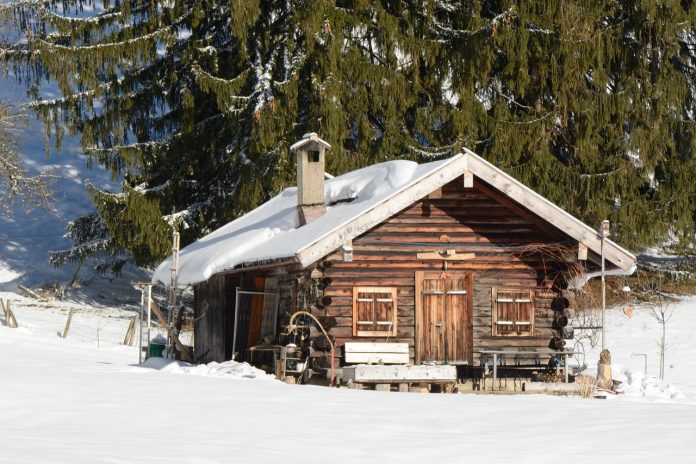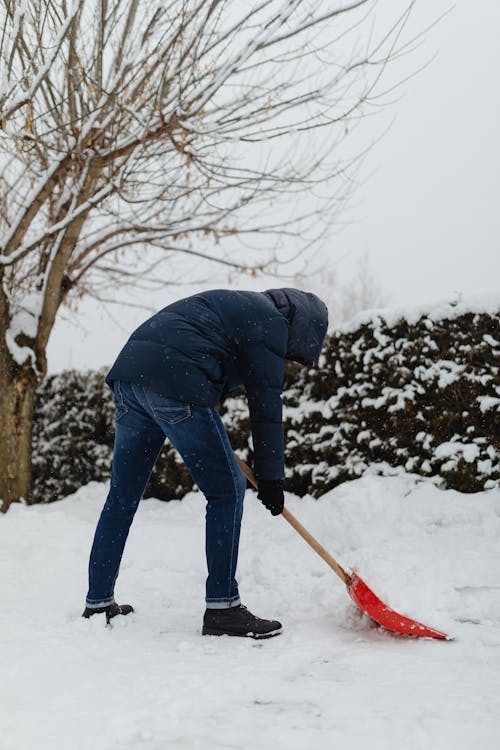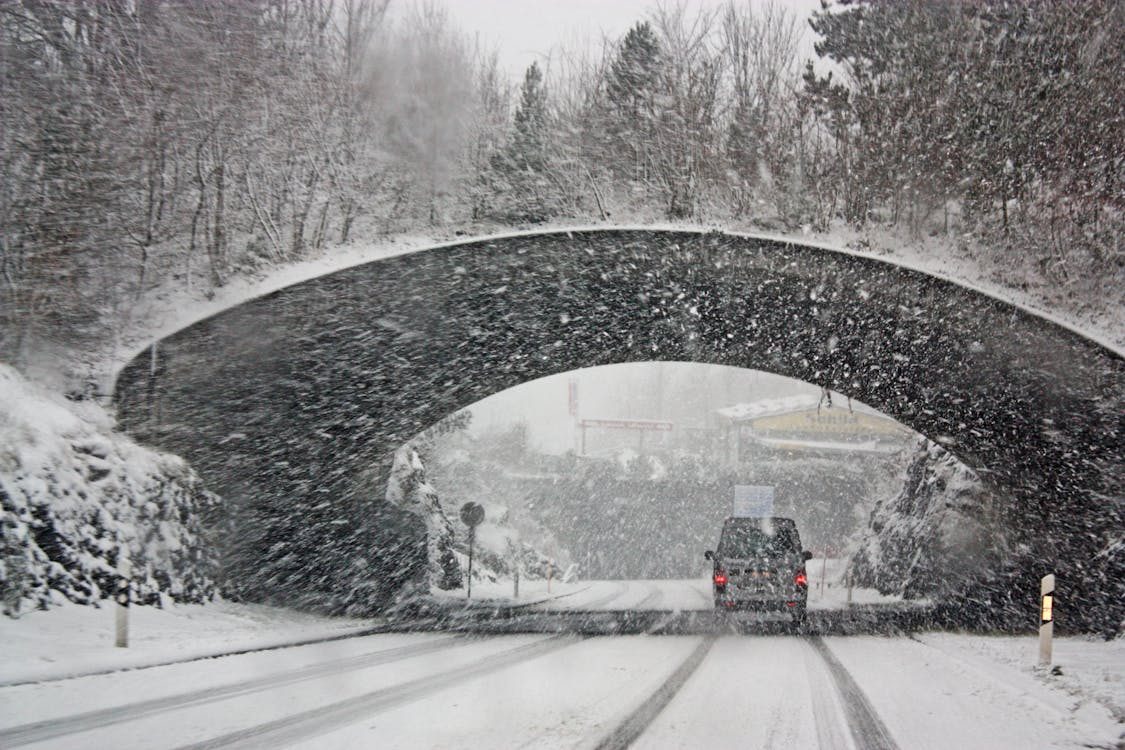In this post, I’ll show you ten ways to prepare your house for winter.
As we approach the end of August, the days start to grow shorter, making it the perfect time to prepare your home and garden for winter. Cold weather, snow, and ice can take a toll on your house and land if you’re not properly prepared.
All it takes is a few proactive steps, however, and you can avoid costly damage, ensuring your home remains warm, safe, and comfortable throughout the colder months.
Whether you’re a seasoned homeowner or new to winter preparations, here is a practical guide to the 10 most important tasks you should check off your list.
Let’s take a look and get you prepared for winter.
Table of Contents
Ten Ways to Prepare Your House for Winter
1. Get your winter tools serviced
Before the first snowfall hits, especially if you live in an area that tends to get covered in snow during the winter months, take your snow blower out of the garage and give it a thorough check. Make sure that it’s in good working condition, that the fuel is fresh or the battery is charged, and that all moving parts are well lubricated.
There’s nothing worse than getting snowed in because your blower won’t stop. Also, inspect and organize your snow shovels, ice melt, and other winter tools so that you’re not scrambling during a potential storm.
2. Inspect and clean the gutters and downspouts
Clogged gutters can lead to eye stains, which can cause water to back up under your shingles and leak into your home. Clean all the leaves and debris from gutters and downspouts before the first snow.
While you’re at it, make sure that the downspouts direct water at least 3-4 feet away from your foundation to prevent flooding when the snow melts. By ensuring your gutters are clear, you won’t have to worry about potential water and ice buildup.
3. Seal gaps and cracks around windows and doors
Heat can easily escape through even the smallest of cracks. Take a walk around your house, both inside and out, to inspect for drafts.
Use weather stripping, caulk, or foam sealant to close up any gaps around windows, doors, or electrical outlets. Not only will this keep your house warmer, but it will also help reduce your heating bill.
READ ALSO: Best Time to Visit Top Destinations This Year
4. Protect your pipes
Frozen pipes can be a nightmare for your home, but you can prevent this by insulating the pipes in unheated areas, such as basements, attics, and crawl spaces.
You can use foam pipe insulation or even heat tape in particularly cold zones. It’s also a good idea to make sure that outdoor faucets are drained and garden hoses are disconnected to avoid cracking or bursting happening.
5. Schedule a furnace check up.
Your furnace will be working overtime during the winter, so you want to ensure it’s ready. Schedule a professional inspection to ensure that it’s clean, safe, and operating efficiently. If you have air filters, replace them monthly during heavy-use seasons to maintain good airflow.
And at the end of summer, you want to ensure that your indoor air quality is optimal for the winter months. If you use a fireplace or a wood-burning stove, you need to have your chimney swept out. Having it inspected and cleaned properly is going to make a significant difference to the health of your lungs while your home is being prepared for winter.
6. Stock up on the winter essentials
When you’re busy prepping your snow blower, take inventory of other key supplies. Stock up on ice melt, sand, and firewood if you happen to use them. You should also consider getting a backup generator if you’re in a storm-prone area or inspecting the one you already own.
Keep blankets, batteries, flashlights, and non-perishable foods handy too. In case of extended power outages. It’s always a good idea to be prepared rather than caught off guard.
7. Inspect the roof for damage
Your roof is your first line of defense against snow and ice, so you want to ensure it’s in good condition. You can use binoculars from the floor level or climb up safely. If you’re experienced in looking for loose, cracked, or missing shingles.
It might be a better idea to hire professionals for this task if you’re not equipped. Pay close attention to flashing around chimneys, skylights, and vents. The smaller issues now can become major leaks later when snow begins to pile up and melt.
READ ALSO: How To Make Your Small Business A Success
8. Prepare the garden and the outdoor areas
Your garden deserves attention before winter sets in. It’s smart to prune dead or dying branches that could fall during a storm and mulch your garden beds to protect roots and perennials.
As snow approaches, it’s a good idea to consider covering raised beds with frost blankets to protect your plants from freezing. Any lawn furniture, pots, and garden tools can be brought inside to extend their life and drain. Irrigation systems can be used to prevent freezing and cracking.
9. Test your smoke and carbon monoxide detectors
With furnaces, fireplaces, and other heat sources running, the risk of carbon monoxide increases in winter. Testing all your smoke and carbon detectors, replacing their batteries, and ensuring they’re in the correct locations near bedrooms is a smart move.
Every floor of your home should have a working detector. If yours is over a decade old, it’s time to replace them.
10. Check insulation and attic ventilation
Heat rises, and without proper insulation, much of it escapes through your attic. Ensure that your attic insulation is adequate, aiming for at least 14 inches of fiberglass or cellulose.
Insulation alone is not enough. Proper attic ventilation prevents moisture buildup and ice dams, helping your roof to last longer and your home to stay drier and warmer.
Conclusion
Busy preparing your home for winter? Don’t forget to prepare yourself and your family for emergencies.
Having an emergency winter plan is a smart idea, as it enables you to know what to do in the event of a power outage, who to contact, and where your emergency supplies are located. Discuss your evacuation routes, especially if you live in areas prone to severe storms.
You need to winterize your life inside and out. Because while winter can be beautiful, it’s also the season that demands preparation.
INTERESTING POSTS
- Your Complete Home Security Guide: Peace of Mind Awaits
- How To Prepare Your Business For Data Loss
- Root Cause Why NFTs May Be Bad For The Environment
- Website Heatmap: What It Is, Why You Need It, And How To Use It
- How To Prepare For A Cyber Assessment
- 10 Home Security Tips You Need To Implement Now [Must Read]
About the Author:
Chandra Palan is an Indian-born content writer, currently based in Australia with her husband and two kids. She is a passionate writer and has been writing for the past decade, covering topics ranging from technology, cybersecurity, data privacy and more. She currently works as a content writer for SecureBlitz.com, covering the latest cyber threats and trends. With her in-depth knowledge of the industry, she strives to deliver accurate and helpful advice to her readers.










